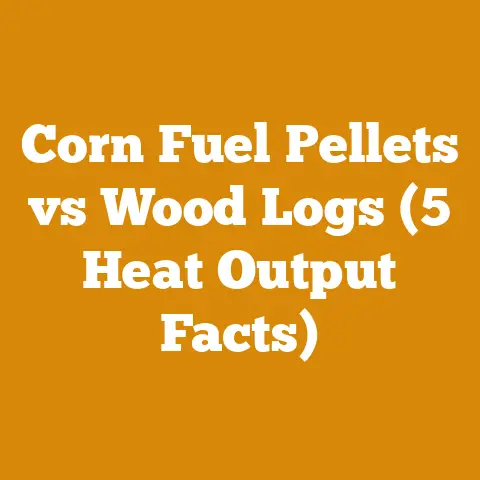Chainsaw White Smoke Causes (5 Pro Tips for Fast Fixes)
One of the things I appreciate most about chainsaws is their relative ease of maintenance. Keeping a chainsaw running smoothly involves understanding a few key indicators, and one of the most common issues I’ve encountered over the years is white smoke. White smoke billowing from your chainsaw isn’t just an annoyance; it’s a sign something’s amiss, and addressing it promptly can save you time, money, and a whole lot of frustration. I’ve spent countless hours troubleshooting chainsaw issues in the field, from the frosty mornings of northern Minnesota to the humid forests of the Pacific Northwest. Let’s dive into the common causes of white smoke and, more importantly, how to fix them.
Chainsaw White Smoke Causes (5 Pro Tips for Fast Fixes)
White smoke emanating from your chainsaw typically indicates that oil is burning in the engine. This isn’t normal, and it signals that something is causing excessive oil to enter the combustion chamber. Identifying the root cause is crucial to preventing further damage and ensuring your chainsaw operates efficiently and safely.
1. Over-Oiling the Fuel Mix
One of the most frequent culprits behind white smoke is an improperly mixed fuel-to-oil ratio. Chainsaws require a precise blend of gasoline and two-stroke oil to lubricate the engine effectively. Too much oil results in incomplete combustion, leading to that telltale white smoke.
Why Fuel Mix Matters
The fuel mix is the lifeblood of your two-stroke chainsaw engine. It’s designed to provide both fuel for combustion and lubrication for the moving parts. A lean mix (too little oil) can cause catastrophic engine damage due to insufficient lubrication, while a rich mix (too much oil) leads to carbon buildup, spark plug fouling, and, of course, white smoke.
Correct Fuel-to-Oil Ratios
Most chainsaws require a 50:1 fuel-to-oil ratio. This means 50 parts gasoline to 1 part two-stroke oil. Always consult your chainsaw’s owner’s manual for the manufacturer’s recommended ratio, as some models may require a different mix.
- Example: For a 50:1 ratio, if you’re using 1 gallon (128 ounces) of gasoline, you’ll need 2.6 ounces of two-stroke oil (128 / 50 = 2.56).
The “Too Much Oil” Mistake: A Personal Anecdote
I remember one time, helping a friend prepare for winter. He was convinced that adding extra oil to the fuel mix would prolong the life of his chainsaw. He was using a ratio closer to 30:1. The chainsaw smoked like a chimney, lacked power, and constantly fouled the spark plug. After draining the fuel tank and mixing the correct ratio, the problem vanished immediately.
How to Fix Over-Oiling
- Drain the Fuel Tank: The first step is to remove the contaminated fuel. Use a siphon or carefully drain the fuel tank into an approved container.
- Mix Fresh Fuel: Prepare a new batch of fuel using the correct fuel-to-oil ratio recommended by your chainsaw manufacturer.
- Clean the Spark Plug: Excess oil can foul the spark plug. Remove the spark plug and clean it with a wire brush. If the spark plug is heavily fouled or damaged, replace it. The correct spark plug gap is typically between 0.020 and 0.025 inches. Use a spark plug gap tool to ensure the correct gap.
- Start the Chainsaw: Start the chainsaw and let it run for a few minutes to burn off any residual oil in the engine. Observe if the white smoke dissipates.
Takeaway: Always adhere to the manufacturer’s recommended fuel-to-oil ratio. Using the correct mix is the simplest and most effective way to prevent white smoke caused by over-oiling.
2. Faulty Crankshaft Seals
Crankshaft seals are essential components that prevent oil from leaking into the combustion chamber. These seals are located on either side of the crankshaft and are subjected to high temperatures and pressures. Over time, they can dry out, crack, or become damaged, allowing oil to bypass them and enter the combustion chamber.
Understanding Crankshaft Seals
Crankshaft seals are designed to create a tight seal between the crankshaft and the engine housing. They prevent oil from leaking out and contaminants from entering the engine. When these seals fail, the engine’s performance suffers.
Signs of Failing Crankshaft Seals
- White Smoke: As mentioned earlier, white smoke is a primary indicator.
- Difficulty Starting: A leaky seal can affect the engine’s compression, making it difficult to start.
- Rough Idling: The engine may idle roughly or stall frequently.
- Oil Leaks: You might notice oil leaking around the crankshaft area.
Diagnosing Crankshaft Seal Failure
Diagnosing a faulty crankshaft seal can be tricky, but here are a few methods I’ve used over the years:
- Visual Inspection: Carefully inspect the seals for signs of damage, such as cracks, tears, or oil residue.
- Pressure Test: A pressure test can help identify leaks in the engine. This involves using a specialized tool to pressurize the engine and check for pressure drops.
- Carburetor Cleaner Test: With the engine idling, spray carburetor cleaner around the crankshaft seals. If the engine speed changes, it indicates a leak.
Replacing Crankshaft Seals: A Step-by-Step Guide
Replacing crankshaft seals requires some mechanical skill and specialized tools. Here’s a general overview of the process:
- Disassemble the Chainsaw: Remove the bar, chain, clutch, and flywheel to access the crankshaft seals. Refer to your chainsaw’s service manual for specific disassembly instructions.
- Remove the Old Seals: Use a seal puller or a small screwdriver to carefully pry out the old seals. Be careful not to damage the engine housing.
- Install New Seals: Apply a small amount of two-stroke oil to the new seals and carefully press them into place. Ensure they are seated correctly and flush with the engine housing. I find using a socket slightly smaller than the seal diameter helps to press them in evenly.
- Reassemble the Chainsaw: Reassemble the chainsaw in the reverse order of disassembly.
- Test the Chainsaw: Start the chainsaw and observe if the white smoke has disappeared.
Tools Needed:
- Socket set
- Screwdrivers
- Seal puller
- Hammer
- Two-stroke oil
Takeaway: Faulty crankshaft seals can lead to oil entering the combustion chamber, causing white smoke. Replacing these seals requires mechanical skill but can restore your chainsaw’s performance.
3. Worn Piston Rings
Piston rings are crucial for sealing the combustion chamber and preventing oil from entering. They sit in grooves on the piston and press against the cylinder wall. Over time, these rings can wear down, lose their tension, or even break, leading to oil seepage into the combustion chamber.
The Role of Piston Rings
Piston rings serve three primary functions:
- Sealing the Combustion Chamber: They prevent combustion gases from escaping past the piston, ensuring maximum power.
- Oil Control: They scrape excess oil from the cylinder wall, preventing it from entering the combustion chamber.
- Heat Transfer: They transfer heat from the piston to the cylinder wall, helping to cool the piston.
Symptoms of Worn Piston Rings
- White Smoke: Similar to other issues, white smoke is a key symptom.
- Loss of Power: Worn rings reduce compression, resulting in a noticeable loss of power.
- Difficulty Starting: Reduced compression also makes the engine harder to start.
- Increased Oil Consumption: The engine will consume more oil than usual.
Diagnosing Worn Piston Rings
- Compression Test: A compression test is the most reliable way to diagnose worn piston rings. Use a compression tester to measure the pressure in the cylinder. Low compression indicates worn rings. A healthy chainsaw should have a compression of at least 100 PSI (pounds per square inch).
- Visual Inspection: If you’re comfortable disassembling the engine, you can visually inspect the piston rings for wear or damage. Look for excessive gaps, cracks, or scoring.
Replacing Piston Rings: A Detailed Guide
Replacing piston rings is a more involved repair that requires engine disassembly. Here’s a step-by-step guide:
- Disassemble the Engine: Remove the cylinder head and cylinder to access the piston. Refer to your chainsaw’s service manual for specific instructions.
- Remove the Piston: Carefully remove the piston from the connecting rod.
- Remove the Old Rings: Use a piston ring expander tool to remove the old rings. Be careful not to scratch the piston.
- Inspect the Cylinder: Inspect the cylinder wall for scoring or damage. If the cylinder is damaged, it may need to be honed or replaced.
- Install New Rings: Install the new rings using the piston ring expander tool. Ensure the rings are properly seated in the grooves and that the ring gaps are staggered according to the manufacturer’s specifications. Typically, the ring gaps should be spaced 120 degrees apart.
- Reassemble the Engine: Reassemble the engine in the reverse order of disassembly. Use new gaskets to ensure a proper seal.
- Test the Chainsaw: Start the chainsaw and observe if the white smoke has disappeared and if the engine has regained its power.
Tools Needed:
- Socket set
- Screwdrivers
- Compression tester
- Piston ring expander
- Gaskets
- Torque wrench
Takeaway: Worn piston rings can cause oil to enter the combustion chamber, leading to white smoke and reduced engine performance. Replacing these rings requires engine disassembly but can restore your chainsaw’s power and efficiency.
4. Damaged Cylinder or Piston
In more severe cases, white smoke can be a sign of damage to the cylinder or piston itself. Scratches, scoring, or cracks in these components can create pathways for oil to enter the combustion chamber.
Understanding Cylinder and Piston Damage
The cylinder and piston work together to compress the air-fuel mixture and generate power. Any damage to these components can compromise the engine’s performance and lead to oil burning.
Common Causes of Cylinder and Piston Damage
- Lack of Lubrication: Running the chainsaw with an insufficient fuel-to-oil ratio can cause excessive wear and scoring.
- Overheating: Overheating can cause the piston to expand and seize in the cylinder, leading to damage.
- Foreign Debris: Dirt or debris entering the engine can scratch the cylinder walls and damage the piston.
- Detonation: Detonation (also known as engine knock) can cause severe damage to the piston and cylinder.
Identifying Cylinder and Piston Damage
- Visual Inspection: Disassemble the engine and carefully inspect the cylinder and piston for scratches, scoring, cracks, or other damage.
- Compression Test: A compression test can indicate cylinder or piston damage if the compression is significantly low.
- Leak-Down Test: A leak-down test can help pinpoint the location of the leak. This involves pressurizing the cylinder and listening for air escaping from the exhaust, intake, or crankcase.
Repairing or Replacing Damaged Components
Depending on the severity of the damage, you may be able to repair the cylinder by honing it. Honing involves using a specialized tool to smooth out the cylinder walls and remove minor scratches. However, if the damage is extensive, the cylinder will need to be replaced.
Replacing the piston is usually necessary if it’s damaged. It’s often recommended to replace the piston rings at the same time.
- Disassemble the Engine: Follow the same disassembly steps as outlined in the “Replacing Piston Rings” section.
- Hone or Replace the Cylinder: If honing, follow the instructions provided with the honing tool. If replacing, install the new cylinder using new gaskets.
- Replace the Piston: Install the new piston with new piston rings, ensuring the ring gaps are staggered correctly.
- Reassemble the Engine: Reassemble the engine in the reverse order of disassembly.
- Test the Chainsaw: Start the chainsaw and observe if the white smoke has disappeared and if the engine is running smoothly.
Tools Needed:
- Socket set
- Screwdrivers
- Compression tester
- Honing tool (if applicable)
- Gaskets
- Torque wrench
Takeaway: Damage to the cylinder or piston can lead to oil entering the combustion chamber and causing white smoke. Depending on the severity of the damage, you may be able to repair the cylinder by honing it, but in many cases, replacement is necessary.
5. Excessive Chain Oiling
While this is less common as a direct cause of white smoke from the engine, it’s worth mentioning because excessive chain oiling can sometimes be mistaken for engine smoke, especially by less experienced users. It can also contribute to overall engine stress.
Understanding Chain Oiling Systems
Chainsaws have an automatic oiling system that lubricates the chain and bar. This system draws oil from a separate oil tank and pumps it onto the chain as it rotates. The amount of oil delivered can usually be adjusted.
Symptoms of Excessive Chain Oiling
- Oil Leaking from the Chainsaw: Excessive oil will drip from the chainsaw even when it’s not running.
- Oil Splattering: Oil may splatter excessively while the chainsaw is in use.
- Oily Residue: The chain, bar, and surrounding area will be covered in an excessive amount of oily residue.
Diagnosing Excessive Chain Oiling
- Visual Inspection: Check the oil tank level. If it’s depleting rapidly, it could indicate excessive oiling.
- Adjust the Oiler: Most chainsaws have an adjustable oiler. Try reducing the oil flow to see if it resolves the issue.
- Check the Oiler Components: Inspect the oil pump, oil lines, and oil filter for clogs or damage.
Fixing Excessive Chain Oiling
- Adjust the Oiler: Reduce the oil flow using the adjustment screw.
- Clean the Oiler Components: Clean the oil pump, oil lines, and oil filter to remove any clogs.
- Replace Damaged Components: If any of the oiler components are damaged, replace them.
Chain Oiling and Engine Stress
While excessive chain oiling doesn’t directly cause white smoke from the engine, it can indirectly contribute to engine stress. An overly oily chain can attract more dirt and debris, which can then be thrown back towards the engine, potentially clogging air filters and causing the engine to work harder.
Takeaway: Excessive chain oiling can be mistaken for engine smoke and can contribute to engine stress. Adjust the oiler, clean the components, and replace any damaged parts to resolve the issue.
Bonus Tip: Fuel Quality Matters
While not directly causing white smoke itself, using old or low-quality fuel can exacerbate any of the above problems. Old fuel can degrade, losing its octane rating and forming gum and varnish that can clog fuel lines and carburetors. This, in turn, can lead to incomplete combustion and increased engine stress, potentially worsening existing issues like worn piston rings or faulty crankshaft seals. Always use fresh, high-quality gasoline with the correct octane rating recommended by your chainsaw manufacturer. I personally prefer using ethanol-free fuel whenever possible, as ethanol can absorb moisture and cause corrosion in small engines.
Preventative Maintenance: The Key to Longevity
Beyond addressing the specific causes of white smoke, implementing a regular preventative maintenance schedule is crucial for extending the life of your chainsaw and preventing future problems. Here are some key maintenance tasks:
- Air Filter Cleaning: Clean the air filter regularly to ensure proper airflow to the engine. A dirty air filter can cause the engine to run rich, leading to incomplete combustion and increased emissions. I recommend cleaning the air filter after every 5-10 hours of use, depending on the operating conditions.
- Spark Plug Inspection: Inspect the spark plug regularly for signs of fouling or damage. A fouled spark plug can cause the engine to misfire or run poorly. Replace the spark plug as needed. I generally replace the spark plug every 25-50 hours of use.
- Fuel Filter Replacement: Replace the fuel filter annually to prevent fuel line clogs. A clogged fuel filter can starve the engine of fuel, leading to poor performance.
- Chain Sharpening: Keep the chain sharp to reduce strain on the engine and improve cutting efficiency. A dull chain requires more power to cut through wood, which can lead to overheating and increased engine wear. I sharpen my chain every 1-2 hours of use, or more frequently if I’m cutting dirty or abrasive wood.
- Bar Maintenance: Regularly clean and lubricate the bar to prevent wear and tear. A worn bar can cause the chain to bind and increase strain on the engine. I clean and lubricate the bar every time I sharpen the chain.
- Proper Storage: Store the chainsaw properly when not in use. Drain the fuel tank and run the engine until it stalls to prevent fuel from degrading in the carburetor. Store the chainsaw in a dry, well-ventilated area.
Safety First: Protecting Yourself
Working with chainsaws can be dangerous, so it’s essential to prioritize safety. Always wear appropriate personal protective equipment (PPE), including:
- Eye Protection: Safety glasses or a face shield to protect your eyes from flying debris.
- Hearing Protection: Earplugs or earmuffs to protect your hearing from the loud noise of the chainsaw.
- Gloves: Heavy-duty gloves to protect your hands from cuts and abrasions.
- Chainsaw Chaps: Chainsaw chaps to protect your legs from accidental cuts.
- Steel-Toed Boots: Steel-toed boots to protect your feet from falling logs and other hazards.
Always follow the manufacturer’s safety guidelines and operating instructions. Never operate a chainsaw if you are tired, distracted, or under the influence of drugs or alcohol.
Troubleshooting Chart: Quick Reference
To help you quickly diagnose and address white smoke issues, here’s a troubleshooting chart:
| Symptom | Possible Cause | Solution |
|---|---|---|
| White Smoke | Over-Oiling the Fuel Mix | Drain the fuel tank, mix fresh fuel with the correct ratio, clean the spark plug. |
| White Smoke | Faulty Crankshaft Seals | Replace the crankshaft seals. |
| White Smoke | Worn Piston Rings | Replace the piston rings. |
| White Smoke | Damaged Cylinder or Piston | Hone or replace the cylinder, replace the piston. |
| Excessive Oiling | Excessive Chain Oiling | Adjust the oiler, clean the oiler components, replace damaged components. |
| Poor Performance | Old or Low-Quality Fuel | Drain the fuel tank, use fresh, high-quality gasoline. |
| Hard Starting | Low Compression (Worn Rings) | Replace piston rings, check cylinder and piston for damage. |
| Rough Idling | Faulty Crankshaft Seals | Replace crankshaft seals. |
Conclusion: A Smoke-Free Future for Your Chainsaw
Addressing white smoke issues in your chainsaw requires a systematic approach. By understanding the common causes and following the troubleshooting steps outlined in this guide, you can effectively diagnose and resolve the problem. Remember, preventative maintenance is key to extending the life of your chainsaw and preventing future issues. By implementing a regular maintenance schedule and prioritizing safety, you can ensure your chainsaw operates efficiently and safely for years to come. Now, get out there and tackle those wood processing projects with confidence!






